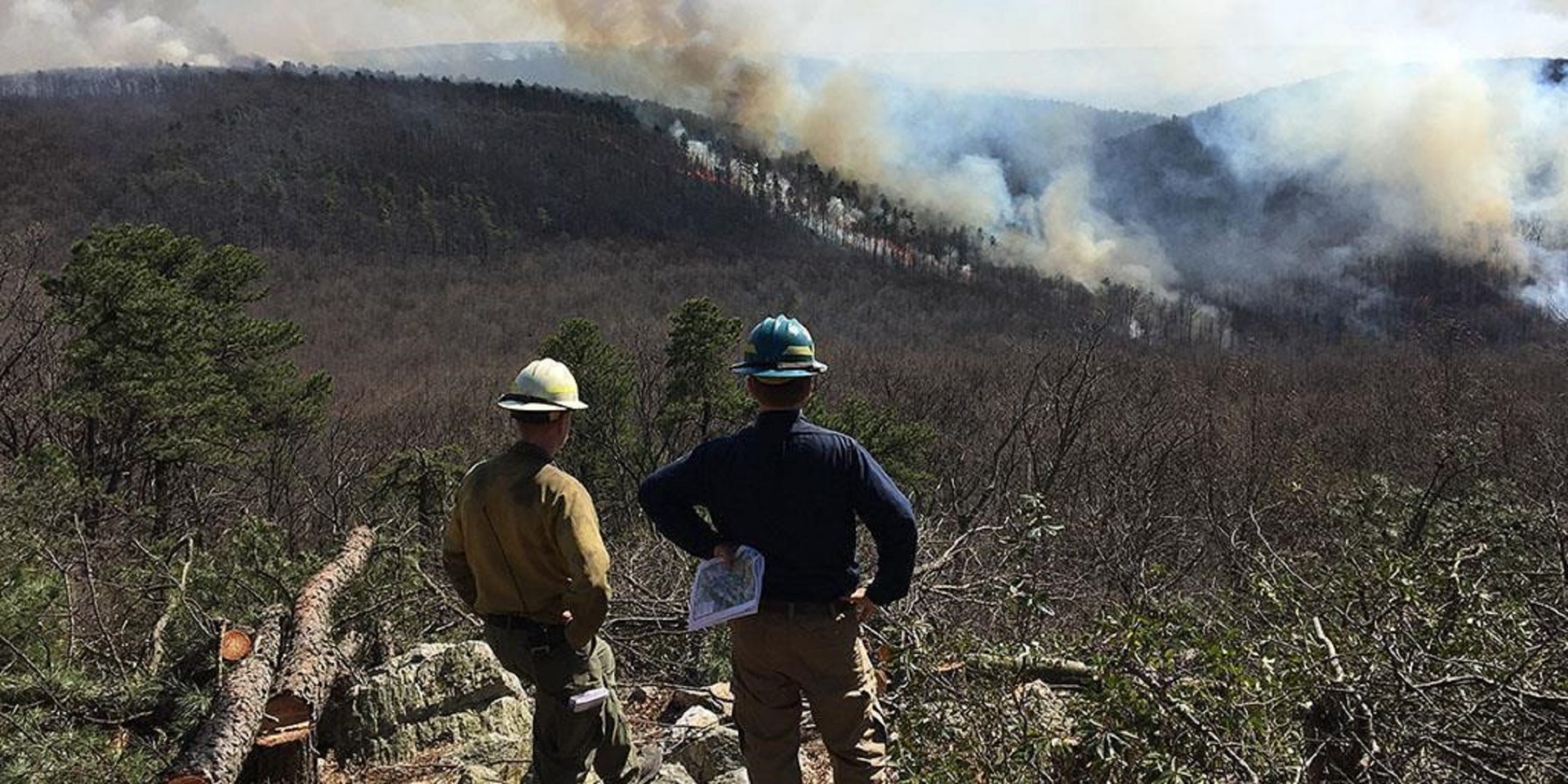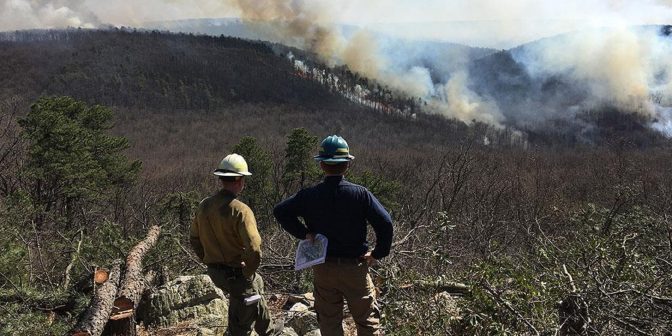
This file photo shows a prescribed burn undertaken by the Department of Conservation and Natural Resources.
Courtesy Department of Conservation and Natural Resources


This file photo shows a prescribed burn undertaken by the Department of Conservation and Natural Resources.
Courtesy Department of Conservation and Natural Resources

Courtesy Department of Conservation and Natural Resources
This file photo shows a prescribed burn undertaken by the Department of Conservation and Natural Resources.

Courtesy Department of Conservation and Natural Resources
This file photo shows a prescribed burn undertaken by the Department of Conservation and Natural Resources.
Wildfires aggravated by the effects of climate change have been raging across the western United States for weeks.
The commonwealth is starting to see changes in its fire season as well.
Data from the Department of Conservation and Natural Resources shows Pennsylvania had 686 fires on average each year between 2015 and 2019.
Most of the state’s fires are small and are extinguished quickly. They also typically happen in the spring.
But Mike Kern, Chief of Forest Fire Protection under DCNR, said this year they saw an unusually high number of fires in February — 161 this year compared to 11 a year earlier.
“It’s pretty rare,” he said. “Usually in February we have snow on the ground or it’s cold enough, there’s not a lot of fires. Anytime the vegetation here is dormant and it’s dry enough, we can have fires.”
Scientists expect Pennsylvania’s climate to get warmer and wetter because of climate change. Kern said that might make fires more common in different seasons.
He said it only takes a few degrees for a snowstorm to turn to rain. In that case, some rain will soak into the ground, some will dry up, and dormant vegetation will be susceptible to fires.
The Wolf Administration has warned of a heightened wildfire risk in Pennsylvania this fall. Precipitation totals from the National Weather Service show a wide area of central Pennsylvania with below-average rainfall this year.
DCNR is responsible for only two million of the state’s 17 million forested acres.
Kern said the best prevention tool the state has is public education. More than 95 percent of Pennsylvania’s wildfires are caused by people.
“We look at it as a lot of those fires could have been prevented,” Kern said.
The most common cause of Pennsylvania’s wildfires is debris burning.
DCNR Secretary Cindy Adams Dunn said wildfire risk increases each year as more development encroaches on heavily wooded tracts.
State officials say people should postpone burning if conditions are dry and windy.
StateImpact Pennsylvania is a collaboration among WITF, WHYY, and the Allegheny Front. Reporters Reid Frazier, Rachel McDevitt and Susan Phillips cover the commonwealth’s energy economy. Read their reports on this site, and hear them on public radio stations across Pennsylvania.
(listed by story count)
StateImpact Pennsylvania is a collaboration among WITF, WHYY, and the Allegheny Front. Reporters Reid Frazier, Rachel McDevitt and Susan Phillips cover the commonwealth’s energy economy. Read their reports on this site, and hear them on public radio stations across Pennsylvania.
Climate Solutions, a collaboration of news organizations, educational institutions and a theater company, uses engagement, education and storytelling to help central Pennsylvanians toward climate change literacy, resilience and adaptation. Our work will amplify how people are finding solutions to the challenges presented by a warming world.